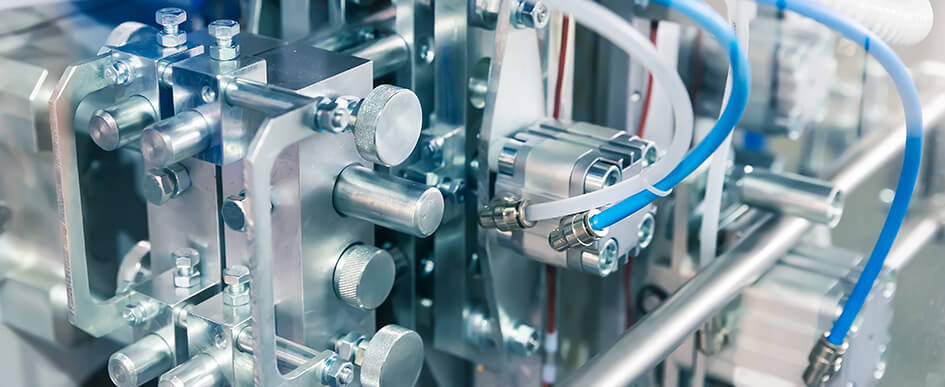Non-Porous Dehumidifying Membranes Easily Remove Moisture from Compressed Air Lines

Reading Time: 2 minutes
Processing and manufacturing facilities rely on pneumatic systems that use compressed air to automate equipment components like motors, valves, actuators, cylinders and other parts. The pressurized air contains a lot of water vapor, and after the compressed air cools, the vaporized water becomes liquid. The water condensation adds moisture to the compressed air lines, which damages pneumatic equipment, causes system shutdowns and can even affect end products. Non-porous water-selective membranes provide rapid dehumidifying of pneumatic air lines to improve the performance of the system and protect it from moisture corrosion.
Compressed air dehumidification methods
The three main methods of industrial compressed air dehumidification are:
- Cooling and condensing, using refrigeration or adiabatic compression
- Absorption, using silica gel or zeolite
- Membrane separation, using porous or non-porous membranes
Refrigerated air dryers are large units that require a large flow rate, a high running cost and maintenance. Absorption air dryers require medium-sized units and a lower flow rate and running cost than the cooling and condensing method, and they also need operator maintenance.
The porous membrane method of compressed air drying involves a small unit with low flow rates, low running costs and little operator maintenance. Non-porous membranes offer those same characteristics, except the unit is even smaller. Because they are nonporous, these membranes minimize the transfer of gases other than moisture. This technology is preferable to porous membranes, which allow substances smaller than the pores to escape along with the moisture.
Advantages of fluoropolymer-based non-porous membranes
Air dryers made from fluoropolymer-based non-porous fiber membranes attract water molecules. When there is a change in the partial pressure of the water vapor, the gases passing outside and inside the membrane generate a force to equalize the concentration inside. This driving force causes the moisture contained in the wet gas to continuously permeate to the dry gas side. Because the driving force is the humidity differential between gases, no energy input is required.
By simply moving the humidified gas to the inside of the hollow fiber membrane and dry (purge) gas to the outside, this clean and compact method allows only moisture to permeate through the non-porous membrane, efficiently dehumidifying the compressed air.
Dehumidification starts simply by connecting the hollow membrane module to the piping of any machines or devices that use compressed air. These compact, lightweight units can be mounted in any location and in any position. Membranes made from fluorinated ionomers also have high chemical resistance, making them ideal for use with strong acids and alkalis. However, they are not recommended for use with ammonia or organic solvents.
FORBLUE™ sunsep™ gas dryer
AGC offers the FORBLUE™ sunsep™ SWB/SWC/SWF Series of air dryers for a wide range of industrial pneumatics operating conditions and specifications. They are exceptionally durable, yet flexible and easy to connect, and available in a variety of sizes.
Contact AGC’s experts to learn more about FORBLUE membrane solutions and how they can improve your air dehumidification or humidification applications.
 English
English 